Hypertension is a disease associated with periodic or constant increase in blood pressure (blood pressure).For some people, the pressure of the norm is increased, but it is an exception to the rules, and the listed indicators for most people are pathological.
Causes and mechanism of hypertension development
In a healthy person, the pressure is normal about 120/80 mm Hg.Art.At the physiological and chemical level, the increase in pressure is a natural reaction of the body to any danger or stress.In the critical situation, adrenaline throws into blood, the heart begins to work faster, bowls narrow, muscle contract, and pressure is growing.
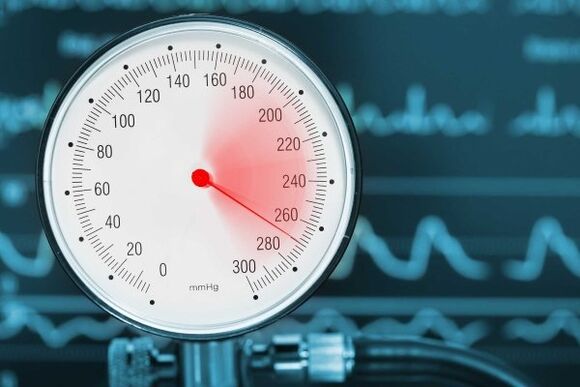
Regular stress, experiences, lack of sleep, problems - all this can lead to a chronic increase in pressure.However, doctors also call other causes of hypertension: heredity, surplus weight or obesity, thyroid disorders, kidneys, a mannema deficiency in the body, getting some drugs.
The pathogenesis of hypertension is not fully clarified.The hemodynamic basis for increasing blood pressure is an increased upper tone due to nervous pulses coming from the central nervous system along the cute roads.
In addition to the neurogenic mechanism, other mechanisms that increase blood pressure, especially hummades can be included (in succession) humoral.
The kidney factor is also important that is associated with acutely ischemia.The inclusion of kidney factors contributes to the development of high and stable blood pressure.A well-known role in the complex pathogenetic hypertension mechanism is played by the hormones of the cortical layer of the adrenal gland.
Thus, two groups of factors may differ in the mechanism for increasing blood pressure in hypertension: neurogens, which have a sympathetic nervous system directly on the tone of arteriola and humor, associated with improved catering and some other biologically active substances that cause pressure effect.
The hypertension development mechanism is complicated.It includes many bodies and systems.The degree of damage to various hypertension bodies may be unequal, therefore, there are several clinical and anatomical hypertension variants: with the prevailing damage to the kidney, heart and brain.
Symptoms
The arterial pressure is blood pressure, which depends on the constant hits of the heart that performs the function of the pump.Gives about 70-90 abbreviations per minute.By measuring blood pressure, we take into account two digits: systolic pressure (at the time of the contraction of the heart muscle) and diastolic pressure (at the time of its relaxation).Arterial hypertension is usually called an increase in pressure above 140 to 90, respectively.
With increased pressure, numerous such characteristics usually be observed:
- Headaches, noise in ears;
- Visual disorders;
- dizziness;
- absent-lingerie;
- Worsening memory;
- drowsiness;
- blood pressure unsteadiness;
- nausea;
- Chills;
- swelling of eyelids, face swelling in the morning;
- heart home heart;
- coldness, sweating, head pulsation;
- Face redness, internal tension, anxiety, irritability;
- Performance reduction;
- swelling of limbs, finger stiffness;
- Pain in the heart.
If one of these symptoms occasionally notice, it is not proof of increased pressure.But if you notice the chronic sign presence, contact your doctor.
The most common sign that indicates the disease is a headache.The second most important symptom of increased pressure is the problems with visual perception:
- Hanging in the eyes;
- inexplications of objects;
- Reduction of peripheral vision;
- Bouts the following;
- fog in front of my eyes;
- Reducing the reaction to light.
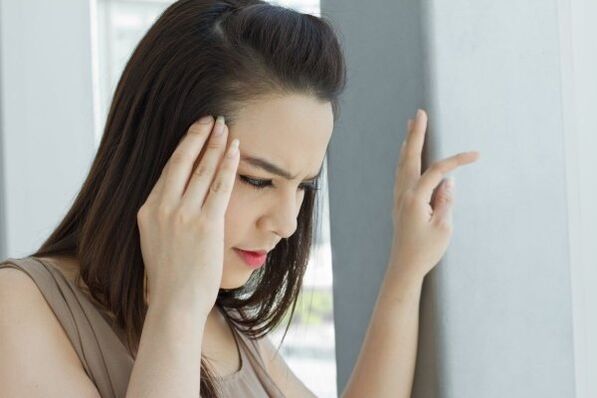
Hypertension and hypertension: What is the difference?
Hypertension is a chronic disease with extended and permanent high blood pressure, and hypertension is a persistent increase in blood pressure (this is not a diagnosis, but body condition).In fact, these terms are one and the same, only the first signifies the name of the disease, and the other - states the fact of increasing blood pressure.
Hypertension hypertension is characterized by current functions.Although hypertension is independent disease, arterial hypertension is a symptom of pathological condition, which is obviously manifested in a permanent increase in pressure.
So, to say that this is one and the same, it is possible only in the case of a hypertensive crisis.The crisis itself is characterized by a permanent increase in pressure (hypertension) and occurs at the same time due to hypertension.
Hypertension phases
Deals for the correct diagnosis, it is necessary to determine the phase of hypertension in the patient and make the appropriate record in its medical card.If hypertension is diagnosed in the patient late, it is, in the second or 3. phase, then the consequences for the patient's body will be more serious than if the treatment of hypertension began in the first phase.However, few patients with hypertension in the initial phase turn to a doctor or at least regularly measures blood pressure.
First phase
140-150 / 90 mm Hg.Art.When the arterial pressure fluctuates in these borders, the patient is diagnosed with the first (light) degree of hypertension.The hypertonic crises rarely occur, the disease is not underage.
Second phase
160-170 / 100-109 mm Hg.Art.- another (moderate) degree of hypertension.The hypertonic crises are typical.The narrowing of the artery's retina, the hypertrophy of the left ventricle was objectively recorded.
Third phase
200-300 / 129 mm Hg.Art.And upstairs.Heavy hypertensive crises (very heavy form of hypertension) often develop.The impaired effect causes hypertensive encephalopathy, left-contribular deficiency, brain development, hemorrhoids and edema of the optical nerve and renal failure and renal failure and renal failure and renal failure.
Why is hypertension dangerous?
Doctors claim that the consequences of hypertension are threatened to live than AIDS, cancer and tuberculosis.The friction of this disease is that its symptoms are similar to the signs of ordinary covering.Therefore, approximately half of hypertension about their illness will learn too late when it is very difficult to treat and is almost impossible to stop the processes of destroying the body that has run.
The danger of hypertension is to start a violation of blood pressure regulation functions, but in the future leads to many serious diseases of internal bodies and systems, especially cardiovascular diseases.Hypertension that occurs without medical control, can lead to heart attack, heart increase and, ultimately, to heart failure.
The consequences of hypertension are particularly dangerous to those who have harmful factors on the body of increased blood pressure - smoking, alcohol drink, unhealthy nutrition, frequent stress, high cholesterol levels in the body and diabetes.Such people increase the risk of heart attack, stroke and renal failure, blindness and various cognitive disorders - reducing memory, intelligence and performance.
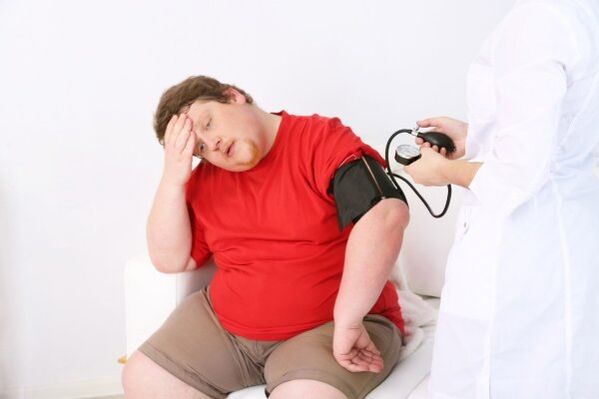
Hypertension is a killer no.1 among all cardiovascular diseases.Mortality from her in the last 25 years grew 98 to 107 people per 100 thousand people.This is noticeable growth.50% of patients are treated quite efficiently, but only 10% reaches the target level of blood pressure, ie below 130 to 80.
Which doctor deals with treatment?
With increased pressure, you should go to the expert.The therapist implements a preliminary test of the patient, takes the necessary tests and determines which doctor is added further.This feature is explained by the fact that the therapist is a specialist in several areas of medicine at once.
After completing the preliminary inspection, the doctor issues a request for the inspection of other experts:
- neurologist;
- cardiologist;
- nephrologist;
- Ocultory;
- Endocrinologist.
Diagnostics
The easiest diagnostic method is measurement of blood pressure.If there is a stable increase at 140/90 mm Hg.Art.And up, that means there is hypertension.
Increased pressure is considered stable during repeated measurements (at least 2-3 times on different days 4 weeks).
The following diagnostic methods are also used to determine the presence of hypertension:
- Earness analysis for protein and glucose;
- on hemoglobin or hematocrit;
- Determination of creatinine levels or increase in nitrogen in the blood and urine;
- Glucose level during starvation;
- Electrocardiogram;
- Heart ultrasound, kidneys;
- Counseling on optometrists with the study of bloody lower boats.
Blood pressure measurement
Measurement of blood pressure with manual tonometer (Korotkov method):
- The cuff tonometer should be at the heart level (mid-chest) 2 cm above the elbow.The finger should pass between a manholder from the male and the hand.The cuff should cover at least 80% of the shoulder volume and at least 40% of its length.
- Install the phonondoscope of the membrane at the point of pulsation of the arms of the artery.
- Quickly pump air into a cuff pear (don't forget to close the valve in advance) so the air is not returned to the upper pressure level, 20 mm Hg.Art.exceeds systolic (according to the pulse disappearance).
- Slowly loosen the air with a cuff rate at a speed of 2 mm Hg.Art.in sec.The first blower hears fit the upper pressure value.The tone stop level corresponds to the lower pressure.If tones are very weak, you should raise your hand, bend and correct it a few times and repeat the measurement.
Blood and urine tests
A general blood test or a test of urine for hypertension will not be informative.It is impossible to determine the cause of the disease to such indicators, but help the knowledge of the disease phase.
From the general blood test you can find out about the number of forms, as well as assess the presence of inflammatory processes in the body.
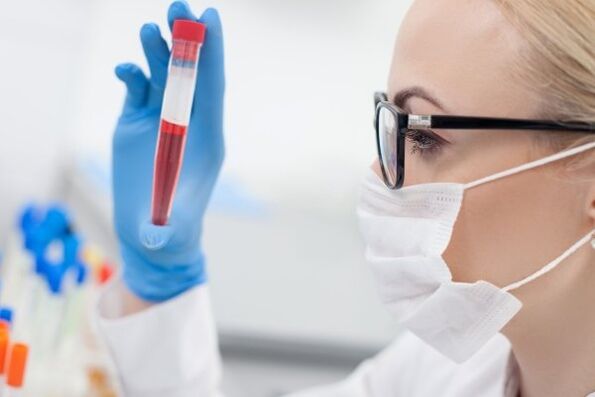
Heart rate assessment
There are several methods for heart rate evaluation:
- Physical diagnosis involves studying the heart muscle with the help of the phonondoscope.The doctor "listens" to the heart, reveals noise, rhythm disorder.Based on the results of physical diagnostics, ECG is prescribed.
- ECG (electrocardiogram) is also an assessment of heart muscle work, only in more detail.Such a study allows you to identify possible changes and fully analyze the heart work in a certain period of time.
- Dopplerography is an effective ultrasonic review that helps determine the state of blood passing through vessels.
- Arteriography is a radiological method that evaluates the state of arterial walls, reveals atheromatic plaques, arteries shortcomings.
Overview overview
Eyes, like hearts, are considered a target authority with hypertension, therefore, when diagnosing increased pressure, it is examined around the nafalmologists.As a rule, with hypertension, in the initial phase, the vein of the retina and the narrowing of the arteries is spread.These functional changes are reversible: with the normalization of pressure, blood vessels are also returned to normal.
In the second phase, organic changes appear, the condition worsens.Microanemiums appear, bleeding can occur.
In the third phase, the state of changing optical nerves, sharpness and field of view deterioration, visual functions are disturbed.
Ultrasound
The ultrasound of the kidney and the adrenal glands, the kidney work is estimated.Due to the increased pressure in the organs, nephrons calms cells that a daily filter blood liters from toxins.Finally, it can lead to kidney failure.
The kidney ultrasound helps identify volumetric formations in the adrenal glands, severe kidney tissue lesions.The ultrasound of kidney arteries is prescribed.
How to treat hypertension?
Non-party methods:
- reduction of body weight to normal;
- Smoking rejection;
- Reduction of alcoholic beverages;
- moderate physical activity (regular walks in fresh air);
- Reduction of salt consumption;
- Increasing the nutrition of plant food rich in calcium, magnesium and potassium;
- Reducing animal fat consumption.
Medicinal therapy is prescribed if Nevalley methods do not have an effect, or the patient has risk factors for the development of diabetes, hypertensive crisis, kidney damage and coronary atherosclerosis.
Drug
Development of hypertension medications last more than ten years.But today, the problem of developing new, more efficient and safer pressure to reduce and control pressure remains acute medicine and pharmacology.
Today, there is the broadest assortment of such drugs, but all differ in the type of exposure, efficiency, indication and contraindications.Their cost is playing an important role.Therefore, for each patient, the doctor selects an individual drug scheme for hypertension drugs, based primarily on the causes of its phenomenon:
- Diuretics.These drugs partially block calcium channels, have a vasodil effect.They are recommended if there are vascular diseases simultaneously as hypertence, but funds are contraindicated for people who have undergone myocardial infarction.
- ACE inhibitors (angiotensinzinoProfing enzim).Reduce the production of enzymes that stimulates the reduction in the elasticity of blood vessels.They are very effective, good tempering patients with hypertension, affect the cardiovascular system.They are often recommended after myocardial infarction, as well as with increased pressure on the background of diabetes.
- Beta-adranosari.Reduce heart rate and reduce strength.They have a wide range of applications and are recommended for angina pectoris, tachycardia, after heart attack, along the background of cardiac failure.
- Dresses for reducing pressure pressure.This includes the extract of the mother, Valerian, the root of the peony.
Diet
A special product for hypertension is baked potatoes.This product is rich in potassium-most important trace element that regulates the metabolism of water water in the body.
The main elements of hypertension diet are potassium, calcium, magnesium.It is these traces elements that greatly contribute to reducing blood pressure.
The hypertension diet involves refusing a faster nutritional food products that usually overload the sodium, and helps increase pressure.In addition, the diet should be saturated with products, also rich calcium and magnesium:
- Grain - bread, rice, wheat solid varieties;
- Dried fruit and vegetables;
- Low -phate meat and poultry;
- Liberal products with low dairy products;
- Walnuts and legumes.
Treat with great caution with fatty food as well as sweets.
Doctors claim that respecting diet helps maintain pressure in normal limits and thus reduces the risk of moves by almost 40%, and cardiac attacks by 30%.
Life
All patients with blood pressure indicators are larger than 120-130 for 80-64 mm Hg.Art.You need to urgently change the famous way of life and diet for them.This consists of limiting smoking and drinking alcohol, properly compiling full diet, physical exercise.
Healthy life style for hypertension, as well as with any chronic disease, is one of the main factors of efficient treatment.Therefore, changes are considered a critical step in the treatment process, as well as the prevention of arterial hypertension.
National medications
Most hypertension patients take special drugs, but you can also fight with disease with the help of well-known popular medications.Consider several effective recipes:
- Line seeds.They contain a large amount of fatty acids omega-3 groups.They contribute to increasing the level of lipoprotein of increased blood density, which is preventing the increase in cholesterol and form atherosclerotic complications on the walls of blood vessels.The body cannot synthesize this substance itself, so it is important to ensure that it comes with food.In linseed seeds The amount of omega-3 is 25% weight plus that they are relatively cheap and well absorbed.Run the seeds of 3 tbsp daily in chopped form.
- Tincture of the hose pine cone.It helps to normalize blood pressure and adjust the post -tak.The tinctures are prepared like this:
- Collect raw materials in the summer months, rinse under running water and pour into a liter;
- Pour vodka or alcohol of 40 degrees, then put in a dark place;
- Insist 2-3 weeks at room temperature;
- Before you start taking, straining through the gauze, doubled.
- Properly prepared tincture should be dark red.Take 3 times a day half an hour before eating on the teaspoon.You can mix with water or tea.
- Garlic.If you are regularly taking garlic, this incentive blood flow in vessels, prevents deposition on their walls of oxidative indigenous degradation.Closed abolish properties of garlic help prevent blood clots.The constant use of garlic for garlic helps reduce blood pressure by 7-8%.
- Two teeth with garlic are thinly chopped and poured a glass of cooked water;
- May not beer 12 hours;
- In the morning, drink and prepare a new infusion.
- The course is a month.Take a glass twice a day.
- Lemon with cranberry and honey.Cut lemon and mix the spoon with a scoop.Add half a tablespoon of the ground floor of a fresh arm, a glass of honey and take one tablespoon of the product in the morning.
- Plantain.Take 4 tablespoons of crushed leaves for Plantain.Pour one glass of vodka and let the composition for two weeks work in a dark place.Strain the mixture and use 30 drops three times a day.
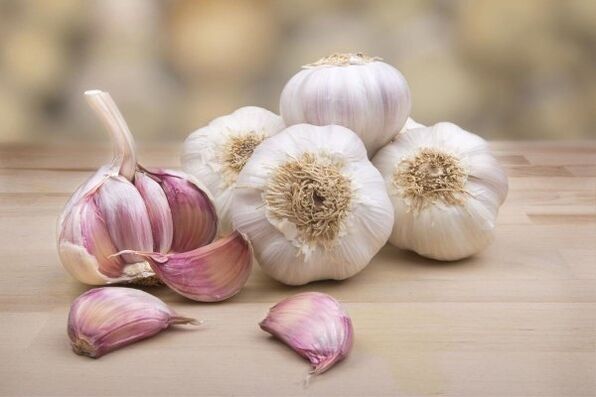
You can also cook and infuse garlic:
Forecast
Forecast for hypertension in terms of absolute recovery is usually unfavorable.Only in the phase of the transistor is a completely termination of further development of the disease.However, modern treatment methods enable you to slow the progress of the disease, prevent the development of complications, mitigate the state of patients and maintain their ability to work for a long time.
The forecast for the renal variant of the course is very unfavorable, especially when it develops renal arterioloolosis.The forecast has worsened by accession atherosclerosis at any phase of hypertension.
Preventive measures for hypertension
Hypertension prevention is divided into primary and secondary.Primary prevention needs healthy - those whose pressure is not yet exceeded by normal numbers.The complex of healing will help not only for many years to keep the pressure normal, but also to solve excess weight and significantly improve generally well-being:
- Low salt diet;
- Limit of animal fat;
- exercise;
- Psychological unloading;
- Discard bad habits;
- Weight control.
Secondary measures aim to maintain blood pressure within the standard in hypertensive patients, exclusion of hypertensive crises and prevent disease complications.Secondary prevention - involvement of psychological trainings that contribute to the moral and emotional unloading, the treatment in sanatoria, the use of sedatives that improve the dream, the use of traditional medicine (hawthos) and daily control of pressure indicators.
If you pay attention to hypertension in a timely manner and start treating it, you can avoid serious consequences.Pressure problems are solved not only with medication, but to a greater extent due to a healthy and right way of life and control of their health.






















